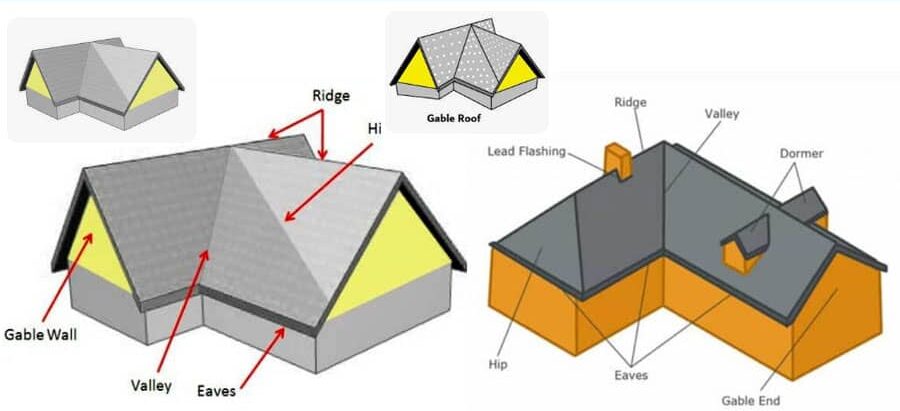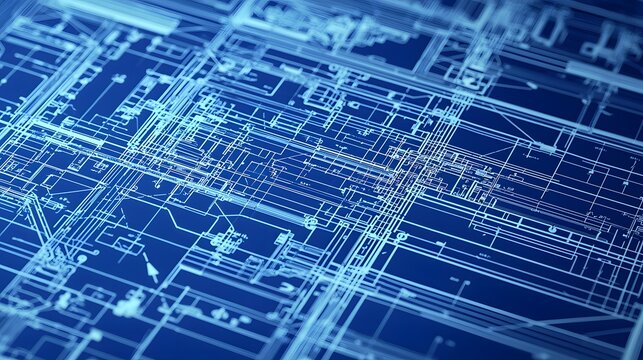Popular Roofing Styles and Their Advantages: A Comprehensive Guide
When selecting the right roof for your building, understanding the different styles and their benefits is crucial. Each roof style offers unique advantages, ranging from aesthetics to functionality. In this section, we will explore the most popular roofing styles, their key features, and the advantages they bring to your home or building.
1. Gable Roof
A gable roof is one of the most classic and widely used roofing styles, particularly in residential homes. It is characterized by two sloping sides that meet at a ridge, forming a triangle shape.
Advantages of a Gable Roof:
- Excellent Drainage: The steep slopes of a gable roof allow rainwater, snow, and debris to easily slide off, preventing water accumulation. This makes it an ideal choice for areas with heavy rainfall or snowfall, as it reduces the risk of leaks and water damage.
- Maximized Attic Space: One of the major advantages of a gable roof is the increased attic space it provides. This extra space can be used for storage or converted into an additional room, making it a practical and cost-effective solution for homes with limited square footage.
- Natural Ventilation: The design of a gable roof allows for excellent airflow, making it easier for hot air to escape from the attic. This natural ventilation can help reduce energy costs in the summer by keeping the house cooler.
- Aesthetic Appeal: The clean, triangular lines of a gable roof are both simple and elegant, offering a timeless design that suits almost any architectural style. Whether your home is traditional, contemporary, or rustic, a gable roof will complement the overall look.
2. Hip Roof
A hip roof features slopes on all four sides that meet at a central peak. Unlike the gable roof, which has two sloping sides, the hip roof is more symmetrical and offers additional structural benefits.
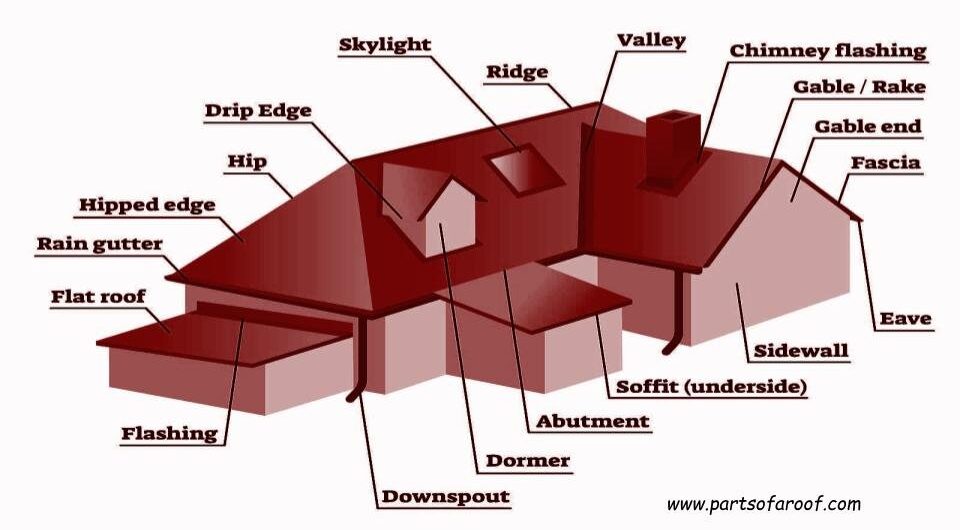
Advantages of a Hip Roof:
- Enhanced Stability and Wind Resistance: One of the biggest advantages of a hip roof is its ability to withstand strong winds. With slopes on all four sides, the roof is more aerodynamic and stable, making it an excellent choice for areas prone to hurricanes, tornadoes, or other extreme weather conditions.
- Aesthetic Balance: The uniform slopes of a hip roof provide a balanced and aesthetically pleasing appearance. Whether you’re designing a modern home or a traditional one, the symmetrical design of a hip roof can complement various architectural styles, offering a refined look.
- Better Protection from the Elements: Due to its enclosed design, a hip roof offers better protection against rain, snow, and even extreme sun exposure. The roof’s slanted sides allow water and debris to slide off easily, which also prevents snow from accumulating during winter.
- More Usable Space: The design of a hip roof allows for more usable space in the upper levels of your building. Depending on the pitch and design, the extra space can be used for a loft, storage, or even additional bedrooms.
3. Flat Roof
As the name suggests, a flat roof has a horizontal design with a slight slope to allow water drainage. While it is most commonly seen in commercial buildings, flat roofs are also growing in popularity for modern residential homes.
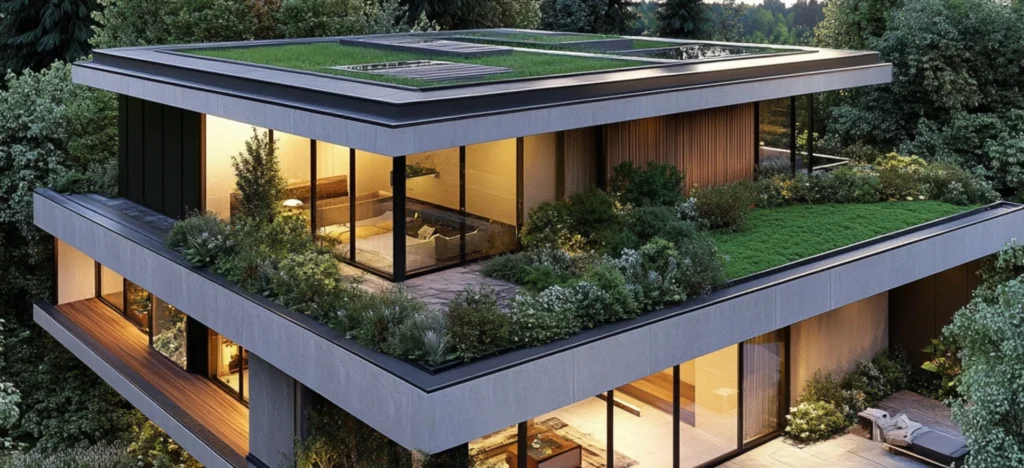
Advantages of a Flat Roof:
- Additional Usable Space: One of the standout benefits of a flat roof is the additional space it offers. Flat roofs are often utilized as rooftop gardens, patios, or areas for solar panels. This extra space can significantly enhance the functionality of your home or building, offering more areas to relax, entertain, or grow your own garden.
- Cost-Effective Construction: Flat roofs are typically easier and quicker to construct compared to sloped roofs. The simplicity of the design allows for less labor and material costs, which can make it a budget-friendly roofing option for both residential and commercial buildings.
- Modern Aesthetic: The minimalist and sleek appearance of a flat roof aligns perfectly with modern architectural styles. For contemporary or urban homes, a flat roof provides a clean, polished look that adds to the overall aesthetic appeal of the building.
- Energy Efficiency: In certain climates, flat roofs can provide better energy efficiency. The added space allows for the installation of insulation or reflective coatings, which can help regulate indoor temperatures, reduce cooling costs, and enhance overall energy savings.
4. Mansard Roof
The mansard roof, often referred to as a “French roof,” features a unique four-sided design with two slopes on each side. The lower slope is steeper than the upper one, creating additional living or storage space in the attic.
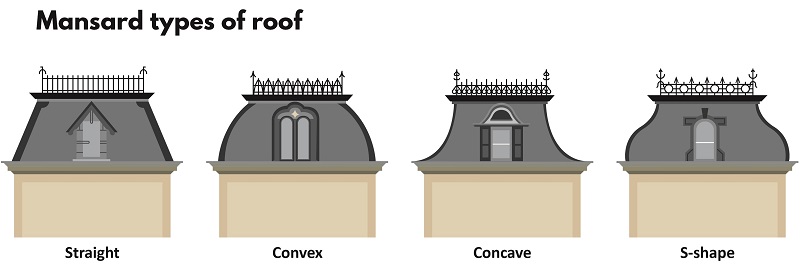
Advantages of a Mansard Roof:
- Maximized Interior Space: One of the main advantages of a mansard roof is the extra living space it provides. The steep lower slope creates a large, usable area in the attic, which can be easily converted into additional rooms, bedrooms, or storage.
- Timeless Elegance: Mansard roofs are often associated with classical European architecture and are perfect for homes that seek an elegant, historical charm. Their unique design adds a touch of sophistication and grandeur to your home, making it stand out in a neighborhood.
- Versatility in Design: The design of a mansard roof allows for more flexibility in architectural design. The additional upper-floor space can be tailored to your needs, whether you’re looking to create a large, open-plan living area or several smaller rooms.
- Increased Property Value: With its elegant, distinctive look and added living space, a mansard roof can increase the overall value of your property. This makes it a great choice for homeowners looking to add long-term value and curb appeal.
5. Shed Roof
A shed roof, also known as a single-pitched roof, is characterized by a single sloping surface, usually with a slight angle. This style is frequently used for modern, minimalist designs and small structures.
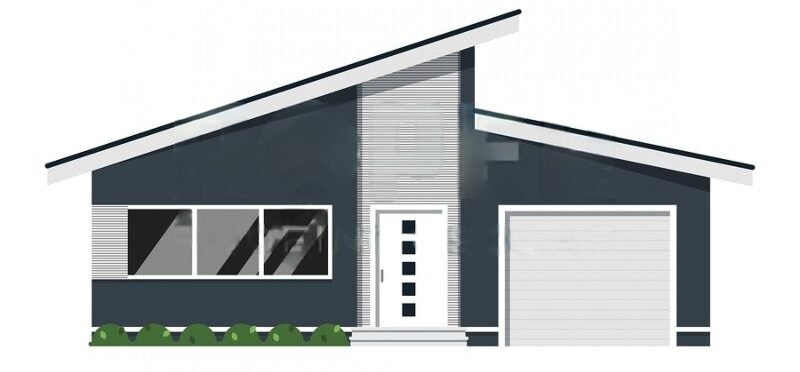
Advantages of a Shed Roof:
- Simplicity and Cost-Effectiveness: The shed roof’s straightforward design makes it one of the most affordable and easy-to-build options. Its single slope requires fewer materials and less labor compared to more complex roof styles, resulting in lower construction costs.
- Natural Light: Shed roofs are often designed with large windows or skylights, which allow natural light to flood the interior. This makes the space feel more open and airy, reducing the need for artificial lighting during the day.
- Contemporary Aesthetic: The sleek, modern design of a shed roof is perfect for homes or structures that prioritize a minimalist and contemporary look. Its clean lines and simple form create a striking visual appeal that works well in urban or modern settings.
- Efficient Drainage: The slope of the shed roof allows rainwater to easily drain off, preventing water pooling and potential leaks. Proper drainage systems, such as gutters or downspouts, can enhance the roof’s performance in managing water runoff.
Selecting Roofing Materials with a Deep Dive into Durability, Cost, and Functionality
When choosing the right roofing material for your home or building, it’s essential to consider factors such as durability, cost, aesthetic appeal, and environmental impact. The material you select will not only affect the look of your building but also its longevity, energy efficiency, and the level of maintenance required. Here, we’ll explore the most common roofing materials, their advantages, and how to choose the best option for your project.
1. Asphalt Shingles
Asphalt shingles are one of the most popular and widely used roofing materials, particularly in residential homes. They come in a variety of styles and colors and are known for their affordability and versatility.
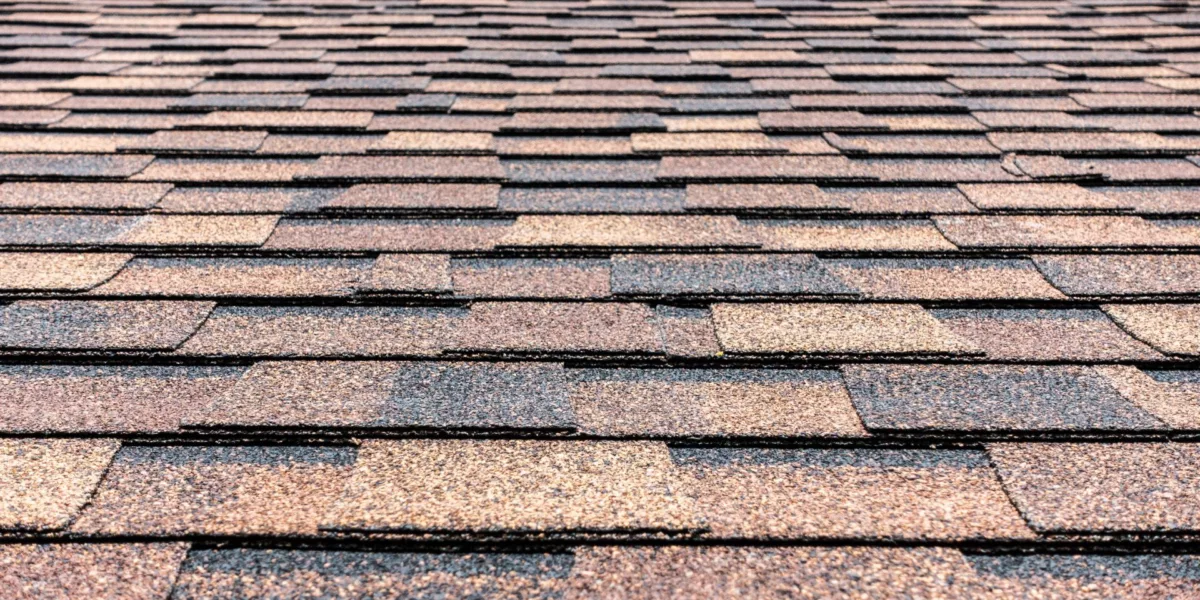
Advantages of Asphalt Shingles:
-
Affordability: Asphalt shingles are one of the most cost-effective roofing materials, making them a go-to choice for homeowners on a budget. The installation process is also relatively inexpensive compared to other roofing options.
-
Wide Variety of Styles and Colors: Asphalt shingles come in a range of styles, including three-tab, architectural, and luxury shingles, which can suit various design preferences. The material is available in numerous colors, allowing you to customize the look of your roof to match your home’s exterior.
-
Easy Installation and Repairs: Asphalt shingles are relatively easy to install, making them a popular choice for contractors. If a shingle becomes damaged, it can typically be replaced without the need to replace the entire roof.
-
Lifespan: Asphalt shingles generally last 20 to 30 years, which is a reasonable lifespan for the cost.
Disadvantages:
- Vulnerability to Extreme Weather: While asphalt shingles perform well in mild climates, they may not hold up as well in areas with extreme temperatures or frequent storms. High winds and hail can damage the shingles, requiring more frequent repairs.
2. Metal Roofing
Metal roofing is becoming increasingly popular for both residential and commercial buildings due to its durability, energy efficiency, and sleek aesthetic. It can be made from materials like steel, aluminum, copper, and zinc.
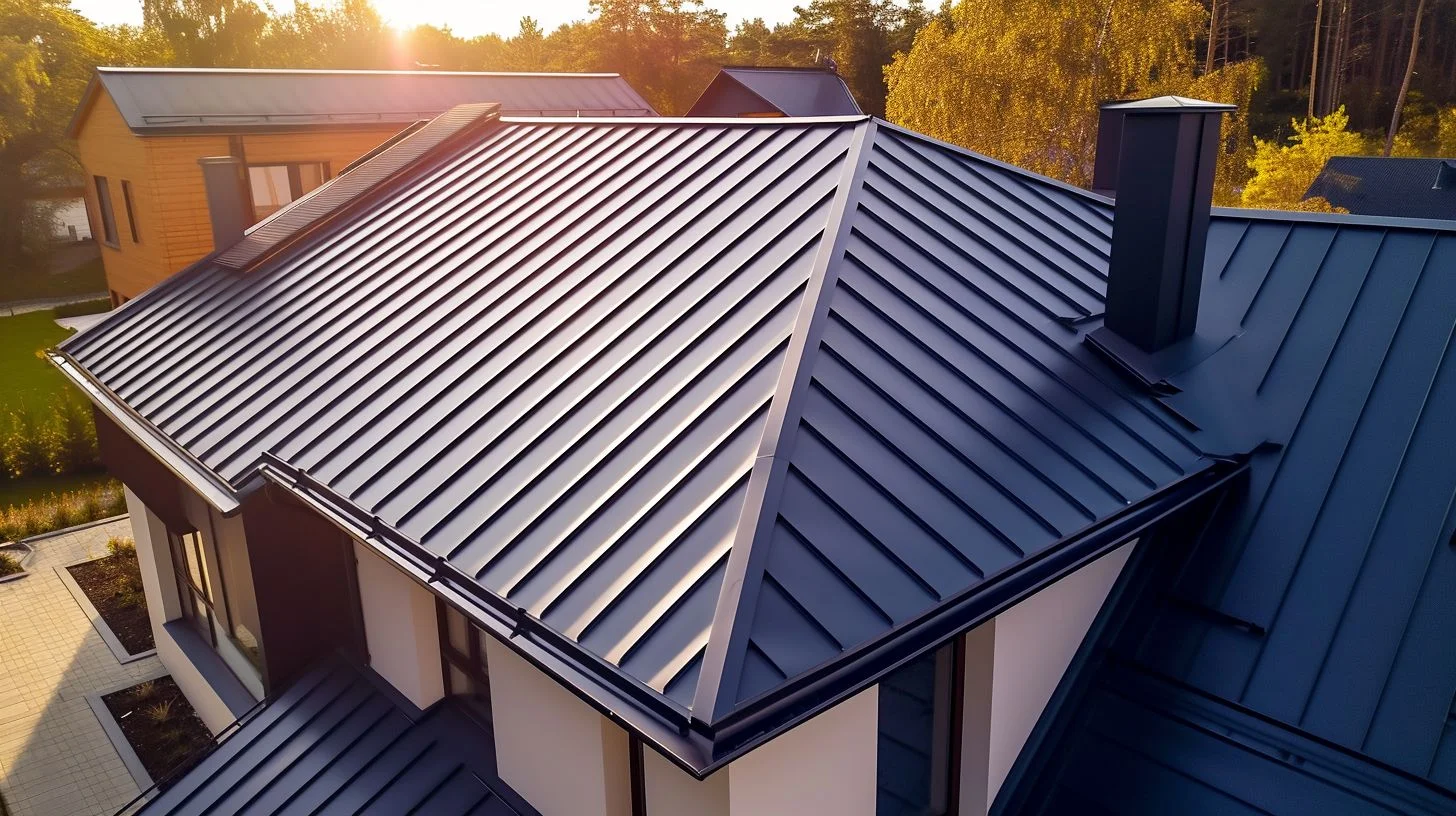
Advantages of Metal Roofing:
-
Durability and Longevity: Metal roofs are known for their incredible durability. They can last anywhere from 40 to 70 years, significantly outlasting asphalt shingles. Metal roofs are resistant to cracking, warping, and corroding, making them ideal for extreme weather conditions.
-
Fire and Weather Resistance: Metal roofing is fire-resistant, making it an excellent choice for areas prone to wildfires or lightning strikes. It also performs well in areas with heavy snowfall or rainfall, as the material sheds water and snow easily.
-
Energy Efficiency: Metal roofs are highly reflective, meaning they reflect much of the sun’s heat, keeping your building cooler in the summer. This can result in lower energy costs, particularly in hot climates.
-
Low Maintenance: Metal roofs require minimal maintenance, as they don’t need to be replaced as frequently as other materials. Regular inspections are typically sufficient to ensure they stay in good condition.
Disadvantages:
-
Upfront Cost: Metal roofing tends to have a higher initial cost compared to asphalt shingles, which may be a consideration for homeowners on a budget. However, the investment pays off in the long run due to the material’s longevity.
-
Noise: Metal roofs can be noisy during rain or hailstorms. Adding insulation can mitigate this, but it may increase the overall cost of installation.
3. Clay and Concrete Tiles
Clay and concrete tiles are known for their distinctive, elegant appearance and long-lasting durability. They are often seen in Mediterranean, Spanish, and Southwestern-style homes.
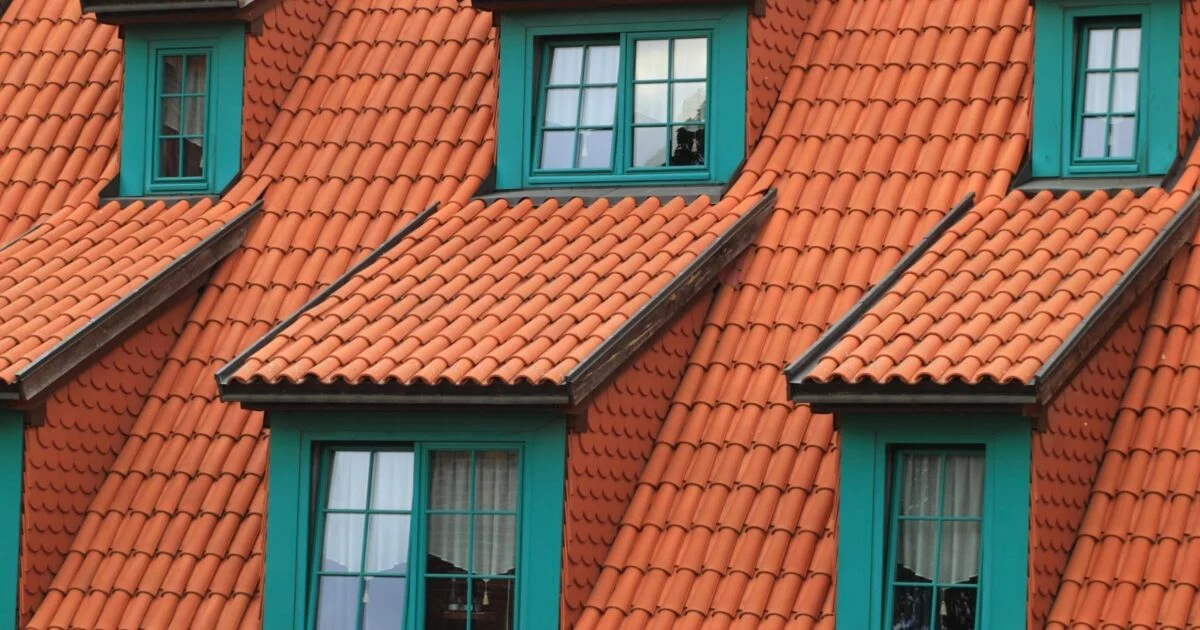
Advantages of Clay and Concrete Tiles:
-
Longevity and Durability: Clay and concrete tiles are incredibly durable, lasting 50 to 100 years with proper care. They are resistant to fire, rot, and insects, making them a great long-term investment.
-
Aesthetic Appeal: Clay and concrete tiles offer a unique, timeless look that enhances the overall curb appeal of your home. They are available in various shapes, colors, and finishes to suit different architectural styles.
-
Energy Efficiency: The natural materials used in these tiles provide excellent thermal insulation. This helps to regulate the interior temperature of your home, keeping it cooler in the summer and warmer in the winter, reducing energy consumption.
-
Weather Resistance: Clay and concrete tiles are highly resistant to extreme weather conditions, including high winds, heavy rain, and hail. This makes them ideal for homes in regions with unpredictable weather.
Disadvantages:
-
Weight: Clay and concrete tiles are heavy, requiring a strong roof structure to support their weight. In some cases, roof reinforcement may be necessary, increasing installation costs.
-
Upfront Cost: These materials tend to be more expensive than asphalt shingles, both in terms of the material cost and installation fees.
4. Slate Roofing
Slate roofing is a premium material known for its natural beauty, strength, and longevity. It is made from natural stone and is typically seen in high-end residential and historic buildings.
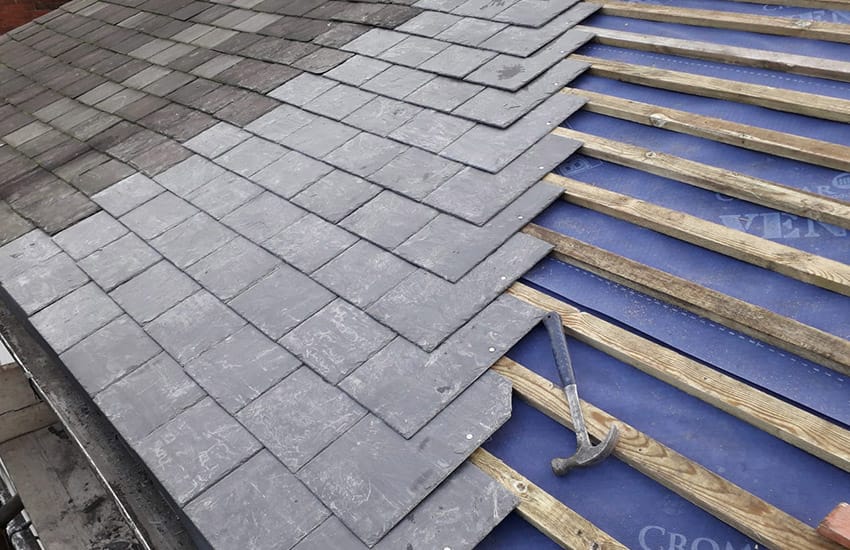
Advantages of Slate Roofing:
-
Exceptional Durability: Slate roofs can last anywhere from 75 to 150 years, making them one of the longest-lasting roofing materials available. They are highly resistant to extreme weather conditions and require minimal maintenance.
-
Aesthetic Appeal: Slate is a beautiful, natural material that adds an elegant, classic look to any building. Its unique texture and variety of colors make it a popular choice for homeowners seeking a luxurious, timeless design.
-
Fire Resistance: Slate roofing is completely fire-resistant, offering superior protection for your home.
-
Environmentally Friendly: Slate is a natural, recyclable material, making it an environmentally friendly choice for homeowners seeking sustainable options.
Disadvantages:
-
High Cost: Slate roofing is one of the most expensive roofing materials, both in terms of material and installation. This cost may be prohibitive for some homeowners.
-
Fragility: While durable, slate can be brittle and may crack if walked on or subjected to heavy impacts. Proper care is needed during installation and maintenance to avoid damage.
5. Wood Shingles and Shakes
Wood shingles and shakes are made from natural wood, typically cedar, redwood, or pine. They are a popular choice for homeowners looking to add a rustic, organic look to their homes.
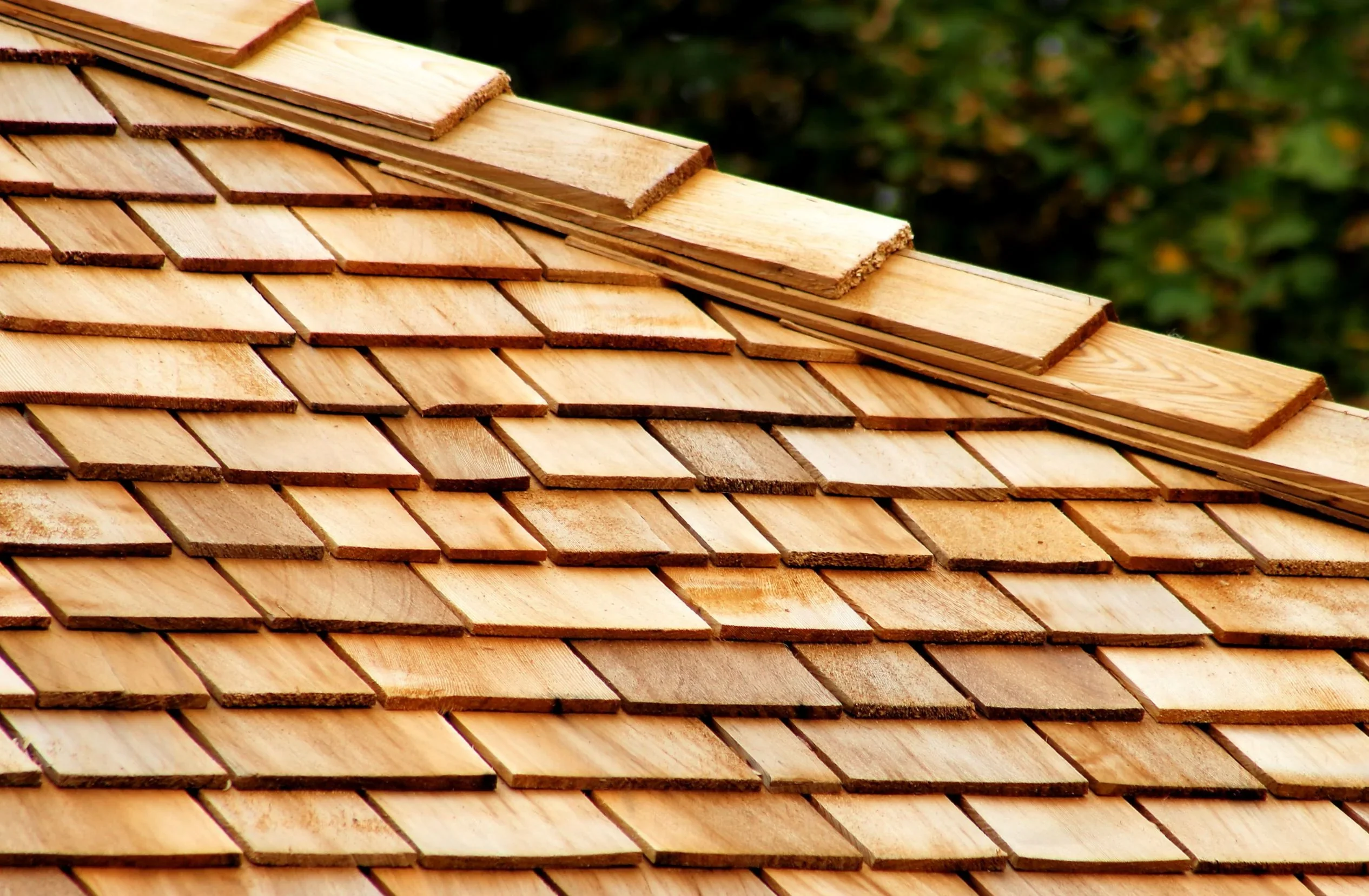
Advantages of Wood Shingles and Shakes:
-
Natural Aesthetic: Wood shingles and shakes provide a warm, rustic appearance that blends beautifully with nature. Over time, the wood will naturally weather and develop a silvery-gray patina, adding character to the roof.
-
Insulation: Wood is a natural insulator, which helps to regulate indoor temperatures and reduce energy costs. This makes wood shingles and shakes a great choice for homes in both warm and cold climates.
-
Eco-Friendly: Wood is a renewable resource, and many wood shingles and shakes are made from sustainably sourced timber, making them an environmentally friendly choice.
Disadvantages:
-
Maintenance Requirements: Wood shingles and shakes require regular maintenance to ensure their longevity. They need to be treated with preservatives to prevent rot, mildew, and insect damage. They also need to be cleaned periodically to avoid moss growth.
-
Fire Risk: Wood is a combustible material, and while treatments can improve fire resistance, it remains a higher fire risk compared to other roofing materials.
6. Green Roofing
A green roof, or living roof, features vegetation planted on top of a waterproof membrane. This environmentally friendly roofing option is becoming increasingly popular in urban areas.
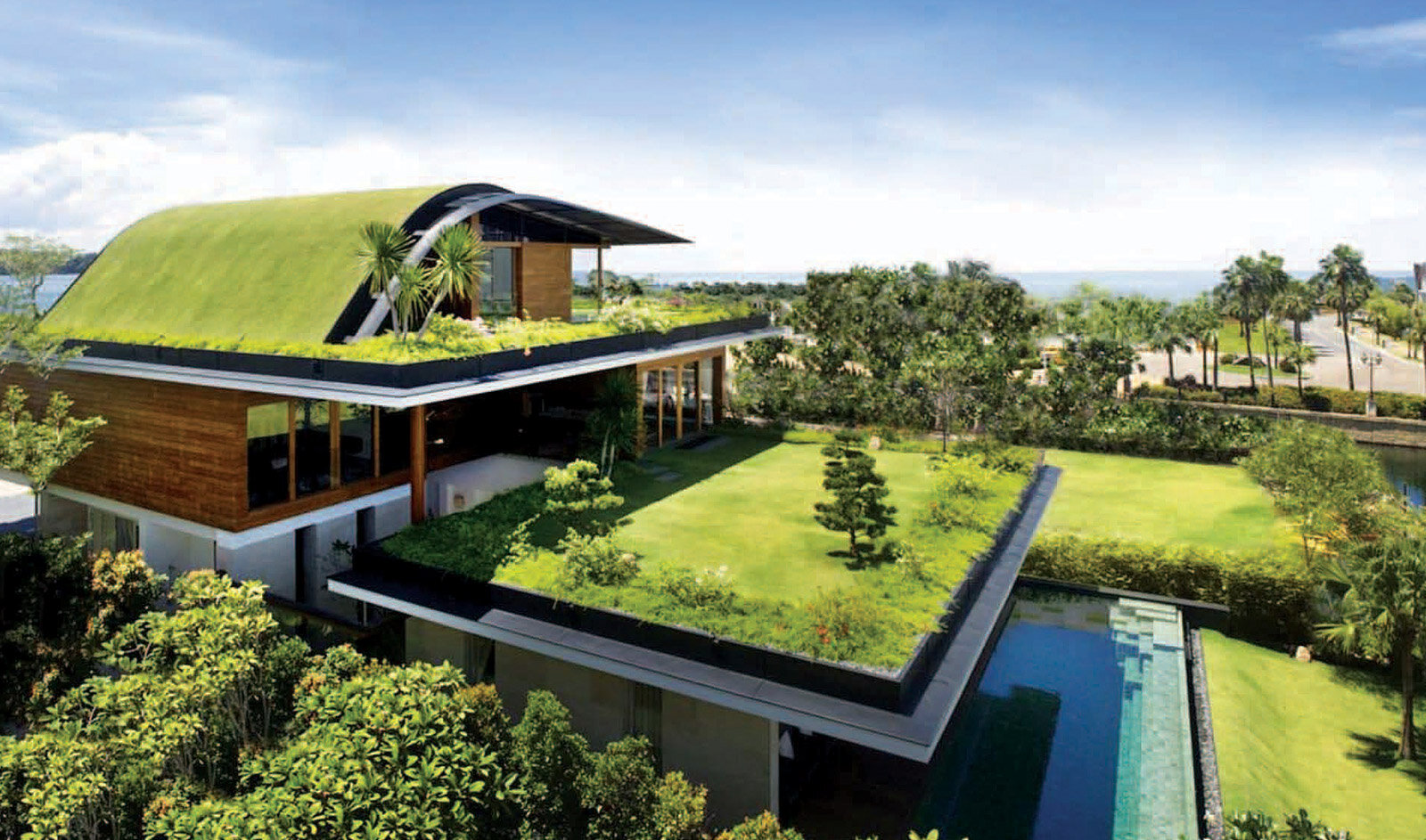
Advantages of Green Roofing:
-
Environmental Benefits: Green roofs help reduce the urban heat island effect by absorbing heat and improving air quality. They also provide insulation, which reduces energy consumption and promotes biodiversity in urban environments.
-
Stormwater Management: Green roofs can absorb rainwater, reducing runoff and the risk of flooding in urban areas. The plants help to filter and retain water, easing the burden on drainage systems.
-
Energy Efficiency: The natural insulation properties of green roofs help regulate indoor temperatures, reducing the need for air conditioning in the summer and heating in the winter.
Disadvantages:
-
Upfront Cost: Installing a green roof can be expensive, due to the need for specialized materials and structural reinforcement to support the weight of the plants.
-
Maintenance: Green roofs require regular maintenance, including watering, pruning, and ensuring the plants remain healthy. Without proper care, the roof can become overgrown or damaged.
How to Choose the Best Roofing Option for Your Building
Choosing the right roofing material for your building is a critical decision that impacts the longevity, energy efficiency, aesthetic appeal, and overall cost of your property. With so many options available, it’s essential to evaluate various factors before making your final choice. This guide will walk you through the key considerations to help you select the best roofing material for your specific needs.
1. Consider the Climate and Weather Conditions
The weather conditions in your area should be one of the first factors to consider when selecting a roofing material. Different materials perform better in certain climates, so it’s important to choose one that suits your environment.
- Hot Climates: If you live in a hot region, consider materials that reflect sunlight and reduce heat absorption, such as metal roofing or light-colored tiles. These materials can help keep the interior of your building cooler, reducing energy costs for air conditioning. Asphalt shingles with reflective coatings can also be a good option for hot climates.
- Cold Climates: In areas that experience harsh winters, it’s essential to choose materials that are durable and can withstand heavy snow, ice, and freezing temperatures. Metal roofing and clay tiles are excellent options as they allow snow to slide off, preventing buildup and reducing the risk of ice dams. Insulating materials are also crucial for maintaining warmth during cold months.
- Wind-Prone Areas: If your building is located in a region prone to high winds or storms, opt for materials that can withstand extreme conditions. Metal roofing, slate, and concrete tiles are known for their wind resistance. Asphalt shingles with a higher wind rating can also be a good option.
- Rain and Hail: For areas with heavy rainfall or frequent hailstorms, materials like metal, concrete, and clay tiles offer excellent protection against water penetration and damage. These materials are less likely to crack under the impact of hail compared to asphalt shingles or wood roofing.
2. Evaluate the Durability and Lifespan
Durability is one of the most important factors to consider when choosing a roofing material. A roof is a significant investment, and you want to select a material that can withstand the test of time and require minimal maintenance.
- Long-Lasting Materials: Slate, clay tiles, and metal roofing are among the most durable options, with lifespans ranging from 40 to 100 years, depending on the material. These roofs require little maintenance, and their high-quality construction can save you money in the long run by reducing the need for frequent repairs or replacements.
- Moderate Lifespan: Asphalt shingles and wood shakes have a lifespan of 20 to 30 years on average. While these materials are more affordable, they may require more frequent maintenance and eventual replacement.
- Maintenance Requirements: Some materials, like wood shingles and shakes, require regular maintenance to prevent rot, moss, and mildew growth. On the other hand, metal, concrete, and slate roofs are low-maintenance, which can save you both time and money in the long term.
3. Assess the Cost and Budget
Cost is often one of the most significant deciding factors when choosing a roofing material. The initial cost of materials and installation can vary greatly, so it’s important to find a balance between quality and affordability.
- Budget-Friendly Options: Asphalt shingles are typically the most affordable roofing material, with both material and installation costs being relatively low. Wood shingles and shakes are also moderately priced, depending on the type of wood.
- Mid-Range Options: Metal roofing and concrete tiles fall in the mid-range in terms of cost. While they may have a higher upfront cost than asphalt shingles, their durability and low maintenance requirements make them a good investment for the long term.
- Premium Options: Materials like slate, clay tiles, and copper roofs tend to be the most expensive in terms of both material and installation costs. These roofs are considered premium options due to their durability, aesthetic appeal, and longevity.
4. Consider Aesthetic Appeal
The appearance of your roof can significantly impact the overall curb appeal of your property. Choosing a material that complements the architectural style of your building is essential for creating a cohesive look.
- Traditional and Classic Look: Slate, clay, and concrete tiles offer a timeless, sophisticated appearance, perfect for historic homes or buildings with a classic design. These materials also provide a variety of colors, textures, and finishes to match your aesthetic preferences.
- Modern and Sleek Appearance: Metal roofing is known for its clean, contemporary appearance and can work well with modern architectural styles. It comes in a variety of finishes, including matte, glossy, and textured, and is available in many colors.
- Rustic or Natural Look: Wood shingles and shakes are ideal for homes with a rustic or natural aesthetic, such as cottages or cabins. They offer a warm, earthy tone that blends well with nature and organic materials.
- Color and Design Options: Most roofing materials come in a range of colors and styles, allowing you to customize your roof to match the exterior of your building. Asphalt shingles, in particular, offer a wide selection of colors, including black, brown, green, and red.
5. Energy Efficiency and Insulation
Energy efficiency is an essential consideration for homeowners looking to reduce energy costs and create a more comfortable living environment. Some roofing materials offer better insulation properties than others, helping to maintain consistent indoor temperatures year-round.
- Energy-Efficient Materials: Metal roofs are highly reflective and can reduce cooling costs by reflecting sunlight away from the building. Clay and concrete tiles also offer excellent thermal insulation, which helps keep the building cooler in the summer and warmer in the winter.
- Insulating Properties of Shingles: Asphalt shingles and wood shakes offer some natural insulation but may not perform as well as metal or tile roofs in terms of energy efficiency. However, adding additional layers of insulation during installation can improve their energy performance.
- Green Roofing: If you’re looking for an eco-friendly and energy-efficient roofing option, consider a green roof or living roof. These roofs are covered with vegetation, which provides natural insulation and helps regulate indoor temperatures. Green roofs also contribute to stormwater management and air quality improvement.
6. Roof Structure and Weight Considerations
The weight of your roofing material is another factor that can impact your choice. Some materials are much heavier than others, and this may require additional support to ensure the structural integrity of the building.
- Heavy Roofing Materials: Slate and clay tiles are some of the heaviest materials and may require reinforcement of the building’s structure before installation. This can add to the overall cost of the project.
- Lightweight Materials: Asphalt shingles, metal roofing, and wood shingles are much lighter than slate and clay tiles. These materials are generally easier to install and require less structural reinforcement, making them more suitable for buildings with lower load-bearing capacity.
7. Local Building Codes and Regulations
Before finalizing your roofing material, check with local authorities or building codes to ensure that the material you choose complies with regulations in your area. Certain regions may have restrictions on specific roofing materials due to safety or environmental concerns, especially in areas prone to wildfires, heavy snow, or high winds.
For example:
- Some areas may restrict the use of wood shingles due to their fire risk.
- In high-wind regions, specific types of roofing materials may be mandated to prevent wind damage.
8. Environmental Impact and Sustainability
If you’re concerned about the environmental impact of your roofing material, consider opting for sustainable options that are both eco-friendly and energy-efficient.
- Eco-Friendly Materials: Metal roofing, for example, is often made from recycled materials and can be fully recycled at the end of its life. Clay and concrete tiles are also made from natural, abundant materials and are highly durable, reducing the need for frequent replacements.
- Recyclability: Many roofing materials, including metal, slate, and even asphalt shingles, can be recycled. This reduces the amount of waste sent to landfills and contributes to a more sustainable roofing solution.
Conclusion
Selecting the right roofing material and style for your building is a vital decision that can impact the overall durability, energy efficiency, aesthetics, and long-term costs of your property. With various options available, from the durability of metal and slate to the affordability of asphalt shingles, each material comes with its own set of advantages that cater to different needs, budgets, and environmental conditions.
Roofing styles, such as gable, hip, and flat roofs, offer different functional and aesthetic benefits, while materials like clay tiles, wood shakes, and metal provide durability and distinctive looks that suit various architectural styles. The choice between these materials ultimately depends on factors such as local climate, cost considerations, maintenance requirements, and personal preferences for aesthetic appeal.
When choosing the best roofing option, it’s important to evaluate key factors such as climate conditions, the lifespan of materials, energy efficiency, and budget constraints. Always take into account the structural requirements of your building, local building codes, and sustainability concerns. Ultimately, the right roofing choice will not only protect your building but also enhance its value, improve energy efficiency, and align with your long-term goals.
Whether you’re building a new structure or replacing an existing roof, making an informed decision about your roofing materials and style ensures that your roof will offer reliable protection and contribute to the aesthetic beauty and functionality of your building for many years to come.
